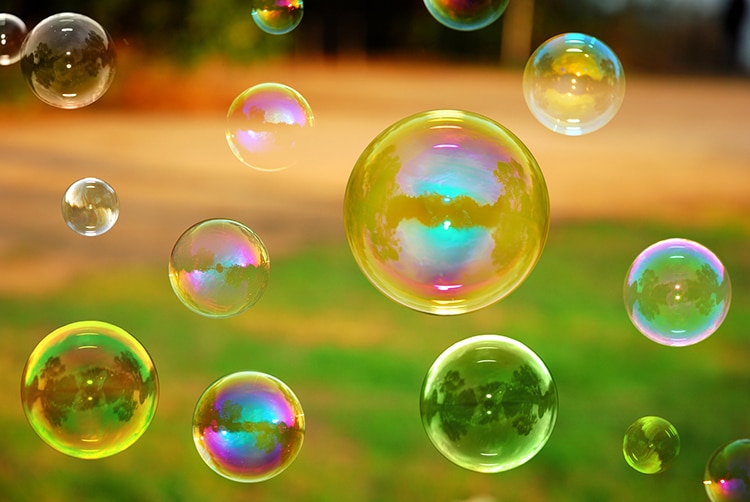
Science is more complicated than one may believe when it comes to bubbles. Blowing bubbles, a favorite children’s hobby, can tell academics about evaporation. In the field of bubble technology, a recent study published in Physical Review Fluids represents a watershed moment. A group of researchers from the University of Lille in France constructed a bubble out of a composite liquid film that lasted 465 days before exploding.
In the open air, typical soap bubbles seldom survive more than a minute. These air pockets are fragile, kept together solely by a thin coating of soapy water’s surface tension. As the water in that layer evaporates into the atmosphere, the surface tension can no longer be maintained. The delicate orb then bursts. Researchers have discovered that overcoming the drying impact of evaporation is crucial to creating a more durable bubble.

A gas marble is a form of more durable bubble. It can be rolled around and held in one’s palm like a conventional marble. A composite liquid sheet is used to create these tougher bubbles. The thin layer that surrounds the air pocket is reinforced and strengthened with tiny plastic beads. The University of Lille team constructed two types of gas marbles to test their longevity: one with water as a basis and the other with water-glycerol as a base. Glycerol is a substance found in soap that forms strong connections with water molecules.
These two forms of gas marbles were compared to conventional soap bubbles by the researchers. The ordinary bubbles rapidly dissipated, but the water-glycerol bubble remained for nearly a year. It was given the epithet “everlasting bubble” because of its 465-day existence, which is a world record for any bubble. The glycerol in the bubble, according to the researchers, absorbs water and prevents evaporative drying, among other benefits.
According to New York University professor Leif Ristroph, who was not engaged in the work, such anti-evaporation technology might be valuable in medicine. “I’m speculating here,” he told NBC, “but I could picture it being beneficial to ‘armor’ small droplets in aerosols and sprays to make them persist longer in the air… For instance, a drug that is delivered by spraying and inhaling the aerosol.”
Scientists created a 465-day-long “everlasting bubble.” This achievement is scientifically significant and might help in the development of future treatments.

